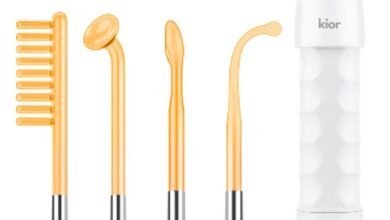A Comprehensive Guide to Selecting the Perfect Electrical Enclosure for Your Specific Needs

Selecting the right electrical enclosure is crucial for ensuring the safety, reliability, and longevity of your electrical and electronic systems. An electrical enclosure is more than just a box; it protects sensitive components from environmental hazards, physical damage, and unauthorized access.
This in-depth guide will assist you in comprehending the most important aspects to take into account when selecting the ideal electrical enclosure for your particular requirements.
Understanding Electrical Enclosures
What is an Electrical Enclosure?
An electrical enclosure is a housing designed to protect electrical components from external influences such as dust, water, chemicals, and physical impact. These enclosures can be made from various materials, including metal and plastic, and are used in a wide range of applications from industrial automation to residential wiring systems.
Why is the Right Electrical Enclosure Important?
Choosing the right electrical enclosure is critical for several reasons:
- Protection: It shields electrical components from environmental hazards and physical damage.
- Safety: It helps prevent electrical shocks and fire hazards.
- Compliance: It ensures that the installation meets industry standards and regulations.
- Durability: It extends the lifespan of the electrical components by providing a suitable operating environment.
Key Factors to Consider When Selecting an Electrical Enclosure
Material Selection
Metal Enclosures
Metal enclosures, typically made from stainless steel, aluminum, or mild steel, offer high durability and strength. They are ideal for environments that require robust protection against physical impact and harsh conditions.
- Stainless Steel: Offers excellent corrosion resistance and is suitable for environments exposed to moisture and chemicals.
- Aluminum: Lightweight and provides good corrosion resistance, making it ideal for outdoor applications.
- Mild Steel: Cost-effective and strong but requires proper coating to prevent rust and corrosion.
Plastic Enclosures
Plastic enclosures, usually made from polycarbonate, ABS, or fiberglass-reinforced polyester, are lightweight and corrosion-resistant. They are suitable for less demanding environments or where weight is a critical factor.
- Polycarbonate: Strong, impact-resistant, and transparent options available for visual inspection of internal components.
- ABS (Acrylonitrile Butadiene Styrene): Good impact resistance and cost-effective, suitable for indoor applications.
- Fiberglass-Reinforced Polyester: Excellent chemical resistance and strength, ideal for corrosive environments.
Read also: What challenges and opportunities does the Internet of Things (IoT) present for urban development?
Environmental Considerations
Ingress Protection (IP) Rating
The Inernet Protocol rating indicates the level of defence an enclosure provides against solids and liquids. It consists of two digits:
- First Digit (Solids Protection): Ranges from 0 (no protection) to 6 (dust-tight).
- Second Digit (Liquids Protection): Ranges from 0 (no protection) to 9K (protection against high-pressure water jets).
For example, an IP65-rated enclosure is dust-tight and protected against water jets.
NEMA Rating
The National Electrical Manufacturers Association (NEMA) rating provides information on the enclosure’s ability to withstand various environmental conditions, including dust, water, corrosive agents, and mechanical impact.
- NEMA 1: General-purpose, indoor use.
- NEMA 4/4X: Suitable for outdoor use, offers protection against windblown dust, rain, sleet, and corrosion (4X has additional corrosion resistance).
- NEMA 7: Designed for hazardous locations, such as areas with explosive gases.
Size and Configuration
Internal Space
The enclosure should provide enough space to accommodate all the electrical components, wiring, and any additional accessories like terminal blocks, DIN rails, and mounting panels. Consider future expansion needs as well.
Mounting Options
Different mounting options include wall-mounted, floor-standing, and pole-mounted enclosures. The choice depends on the application and available installation space.
- Wall-Mounted: Ideal for compact installations and saving floor space.
- Floor-Standing: Suitable for larger, heavier systems that require robust support.
- Pole-Mounted: Used in outdoor or remote locations, such as utility poles.
Thermal Management
Heat Dissipation
Electrical components generate heat during operation, which needs to be managed to prevent overheating. Consider enclosures with built-in ventilation, fans, or heat exchangers to maintain optimal temperatures.
Cooling Systems
In environments with extreme temperatures, active cooling systems like air conditioners or thermoelectric coolers may be necessary to protect sensitive components.
Security Features
Access Control
Ensure the enclosure provides adequate security features to prevent unauthorized access. Options include lockable doors, tamper-proof screws, and integrated alarm systems.
Visibility
For applications where regular monitoring is required, consider enclosures with transparent doors or windows. This allows for visual inspections without opening the enclosure, maintaining security and protection.
Industry-Specific Considerations
Industrial Automation
In industrial automation, electrical enclosures must withstand harsh conditions such as dust, moisture, and mechanical impact. Choose enclosures with high IP or NEMA ratings and consider metal options for added durability.
Marine and Offshore
Marine environments are highly corrosive due to saltwater exposure. Stainless steel or fiberglass-reinforced polyester enclosures with high corrosion resistance are ideal for these applications.
Food and Beverage Processing
Hygiene is paramount in the food and beverage industry. Stainless steel enclosures are preferred due to their ease of cleaning and resistance to corrosive cleaning agents.
Outdoor Installations
Outdoor electrical enclosures need to withstand varying weather conditions. Look for high IP or NEMA ratings, UV-resistant materials, and additional features like rain hoods or sunshades.
Steps to Select the Perfect Electrical Enclosure
- Assess Your Application Needs
Identify the specific requirements of your application, including the environment, type of electrical components, and the level of protection needed.
- Determine the Enclosure Material
Based on the environmental conditions and the required durability, choose between metal and plastic enclosures. Consider corrosion resistance, strength, and weight.
- Check IP and NEMA Ratings
Select an enclosure with the appropriate IP or NEMA rating to ensure adequate protection against dust, water, and other environmental factors.
- Consider Size and Mounting
Ensure the enclosure has sufficient internal space for all components and wiring. Choose a mounting option that fits the installation site and provides ease of access and maintenance.
- Plan for Thermal Management
Evaluate the heat dissipation needs of your components and choose an enclosure with appropriate thermal management features, such as ventilation or active cooling systems.
- Review Security Features
Incorporate necessary security features to prevent unauthorized access and protect sensitive components from tampering.
- Consult Industry Standards
To ensure safety and performance, make sure the enclosure you have chosen complies with all applicable industry standards and laws.
Conclusion
Selecting the perfect electrical enclosure for your specific need involves careful consideration of various factors, including material, environmental conditions, size, thermal management, and security features. By understanding these key aspects and following a structured selection process, you can ensure that your electrical components are well-protected, enhancing the safety, reliability, and longevity of your projects.
Investing the time and effort into choosing the right electrical enclosure not only protects your valuable component but also contribute to the as a whole success and efficiency of your installation.





